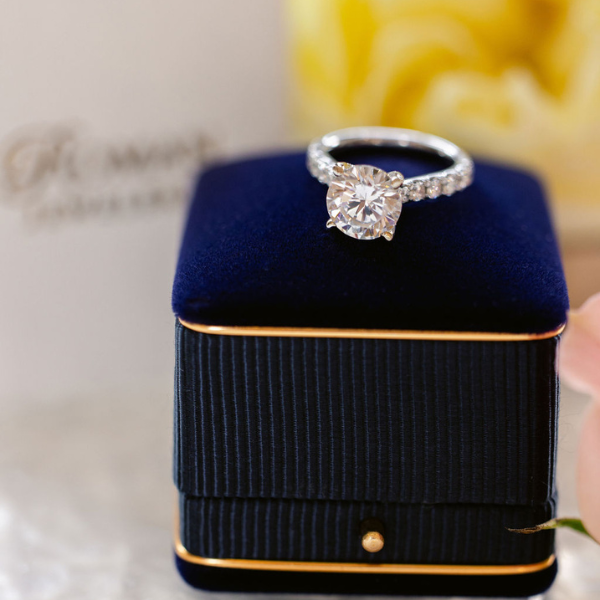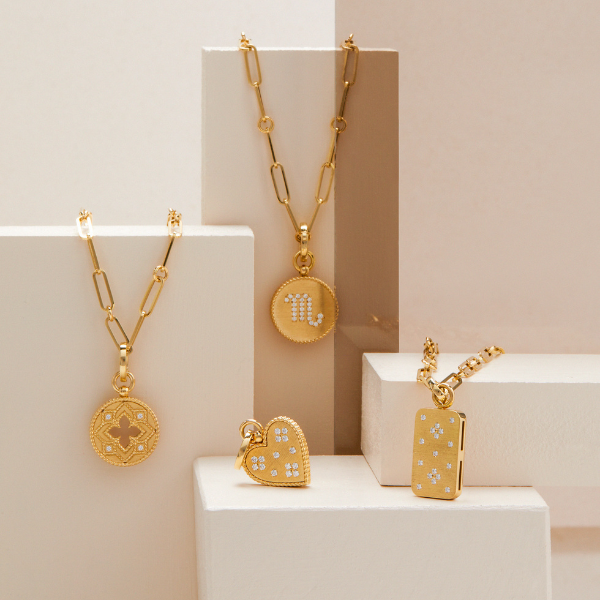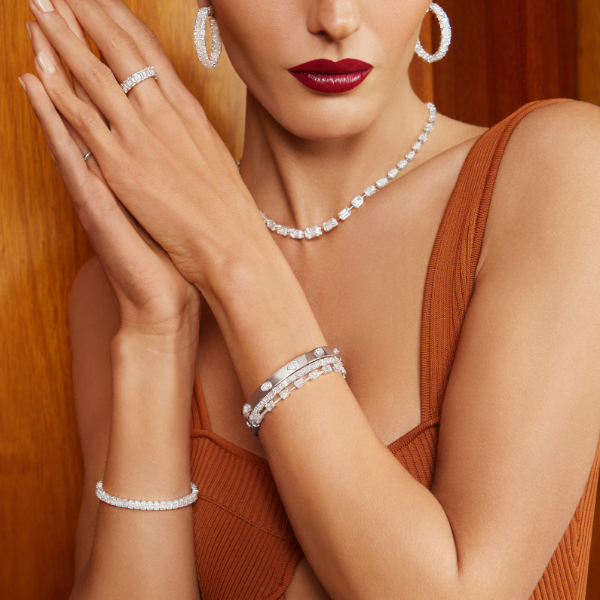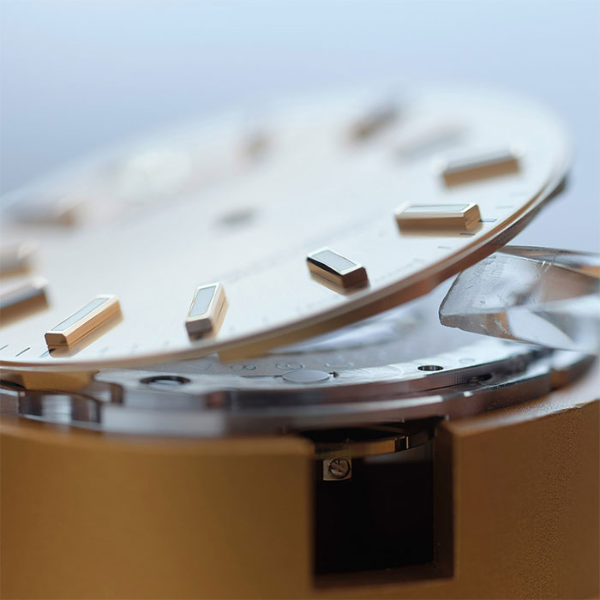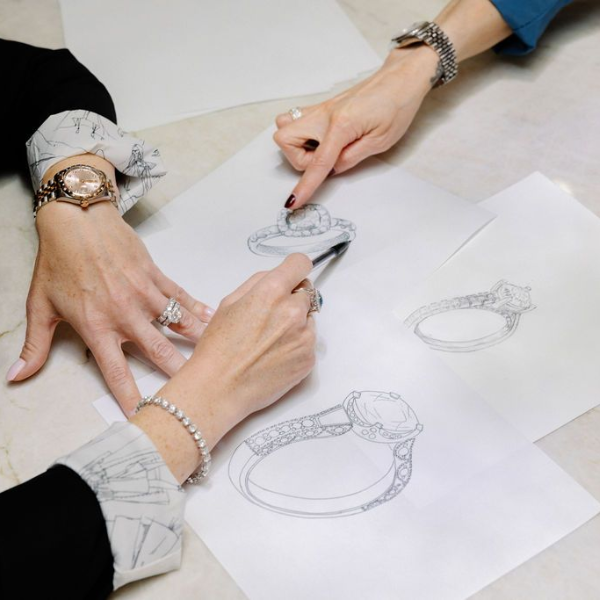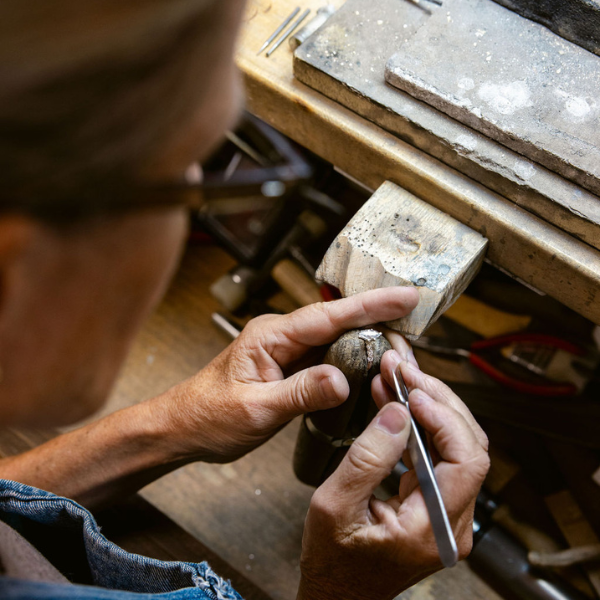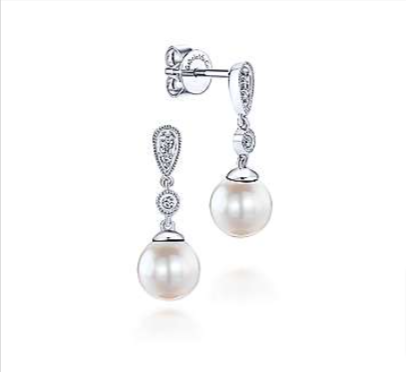Pearls are the only gemstones formed within a living organism, making them the most organic gemstones. Pretty much any shelled mollusk (or clam) can produce a pearl, but just two types of bivalve clams can produce rich creamy-colored, opalescent pearls that are valued in the jewelry industry.
It is a common misconception that pearls can form from a grain of sand: If that were the case, we’d all have a lovely set of pearls. They are actually formed naturally by tiny irritants that enter the bodies of the mollusk. Alternatively, pearl farmers can purposefully plant a bead or piece of tissue that the mollusk coats with nacre (mother-of-pearl).
June Birthstone
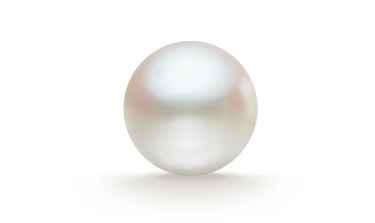
Though June is known for having three birthstones, the pearl is the most desirable because of their natural, timeless beauty. The pearl symbolizes purity and innocence which is the main reason why it is a tradition for the bride to wear pearls on her wedding day.
Not only is it June’s popular birthstone, but it is also common to gift your partner pearls on the 3rd and 30th wedding anniversaries. Pearls are associated with royalty, luxury, and social class, promoting success and good fortune. Pearls are certainly as precious as the wearer, so whether it’s for a birthday or an anniversary.
History and Fun Facts
Derived from the Old French word ‘perle,’ which comes from the Latin word ‘perna‘ meaning “leg”: Perna references the leg-of-mutton shape of an open clamshell. Natural pearls were once found in many parts of the world, but today, pearling is restricted to the Persian Gulf waters near Bahrain. The last and largest pearl diving fleets are owned by Australia, and it continues to harvest pearls from the Indian Ocean. Though natural pearls are produced in the wild, they can also be farmed (cultured) and dyed into a variety of colors. Majority of farmed pearls come from China, and the South Sea pearls (one of the rarest) are farmed in Australia, the Philippines and Indonesia.
Natural vs Cultured (Farmed) Pearls
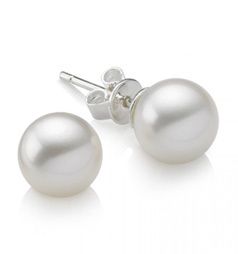
Natural pearls are extremely rare. Historically, many were found in the Persian Gulf; unfortunately, today, most have already been harvested. Small natural pearls are still on the market, but they will most likely be expensive.
On the other hand, cultured pearls are grown in special pearl farms. The mollusks are raised until they are old enough to accept the mother-of-pearl bead nucleus. Through a delicate procedure, a technician implants the bead, then the mollusks are returned to the water and cared for while the pearl forms. Over 10,000 pearls may be sorted before a 16-inch single strand of beautifully matched pearls is assembled.
Freshwater vs Saltwater Pearls
Freshwater pearls are the product of mussels that inhabit freshwater lakes and rivers. Freshwater pearls can be round or irregular in their shapes and exhibit unusual colors. There is a plethora of freshwater pearls available each year-unlike saltwater pearls, whose perfectly round shapes and mirror-like luster make them an ideal choice.
To the contrary, saltwater pearls come from oysters inhabiting the oceans of the world. Whereas saltwater pearls are investment grade quality, freshwater pearls are closer to commercial-quality jewelry in their prices. Regardless of their price or rarity, freshwater pearls are nonetheless beautiful. And when it comes to choosing between a freshwater pearl vs. saltwater pearl, the price is a known to be deciding factor for many.
Check Out More Fun Facts Below
- Ancient Greece believed pearls were ‘tears of the gods.”
- A Chinese historian is the first to write about pearls in 2206 B.C.
- The oldest pearl jewelry thus far was discovered in the coffin of a Persian Princess who died in 520 B.C.
- Ancient Japanese folktales told that pearls were created from the tears of mystical creatures like mermaids and nymphs.
- Early Chinese civilizations believed that by slaying a dragon you can claim the pearl that was supposedly lodged in their teeth which ultimately grants you wisdom.
- In the Hindu culture, pearls are called “teardrops of the moon” because folklore read that dewdrops fell from the moon into the sea, and Krishna picked one for his daughter on her wedding day.
- Pearls have always been associated with wealth and power. During the Byzantine Empire, only the emperor was allowed to wear these gemstones, and Ancient Egyptians were often buried with their pearls.
- Tudor England was known as the Pearl Age because it gained so much popularity with the upper class that vintage portraits show royals wearing pearl jewelry and clothing adorned with the gemstone.
- Pierre Carter traded a double strand of natural pearls for a mansion on Fifth Avenue (653 Fifth Ave) in New York City.
- Joe DiMaggio gave Marilyn Monroe a 16-inch strand of 44 cultured pearls on their honeymoon in Japan.
- Natural pearls can be separated from cultured pearls by taking X-rays to reveal their inner structures.
- A pearl can dissolve in vinegar as it is very soft (2.5-3.0 on the Mohs scale) and sensitive to extreme heat and acidity.
- When rubbed against your teeth, natural and/or farmed pearls have a slightly rough texture while replicas are smooth.
- One of the most famous natural pearls is the 50.56ct La Peregrina. About the size of a pigeon’s egg, the drop shaped pearl was discovered in the 1500s in the Gulf of Panama. It became a prized possession of European royalty. Richard Burton eventually gifted it to Elizabeth Taylor in 1969; Christie’s New York auctioned the Cartier necklace containing La Peregrina for $11.8 million in 2011.
- In the ancient Sanskrit text, the Atharvaveda, pearls were said to bestow long life and prosperity. In Asia, pearls were believed to help alleviate indigestion and hemorrhages. Some 19th century Arab physicians maintained that pearl powder improved eyesight, quieted nervous tremors, and eased depression.
- Cleopatra reportedly dissolved a single pearl in a glass of wine and drank it, simply to win a wager with Mark Antony that she could consume the wealth of an entire nation in just one meal.
How to Assess the Quality of a Pearl?
- Luster: Pearls with high luster have sharp bright reflections on the surface.
- Surface Quality: The number of blemishes on the surface determines the quality.
- Shape: Round pearls are valued the most, but symmetrical drops are also desirable.
- Color: Though white is common and classic, unusual colors are increasing in popularity.
- Nacre Thickness: Thickness is measured to ensure that farmed pearls are durable.
- Size: Cultured Pearls can range from 2-16mm in diameter.
- Matching: For pearl strands and multi-pearl pieces, how well the pearls match affects the value.









